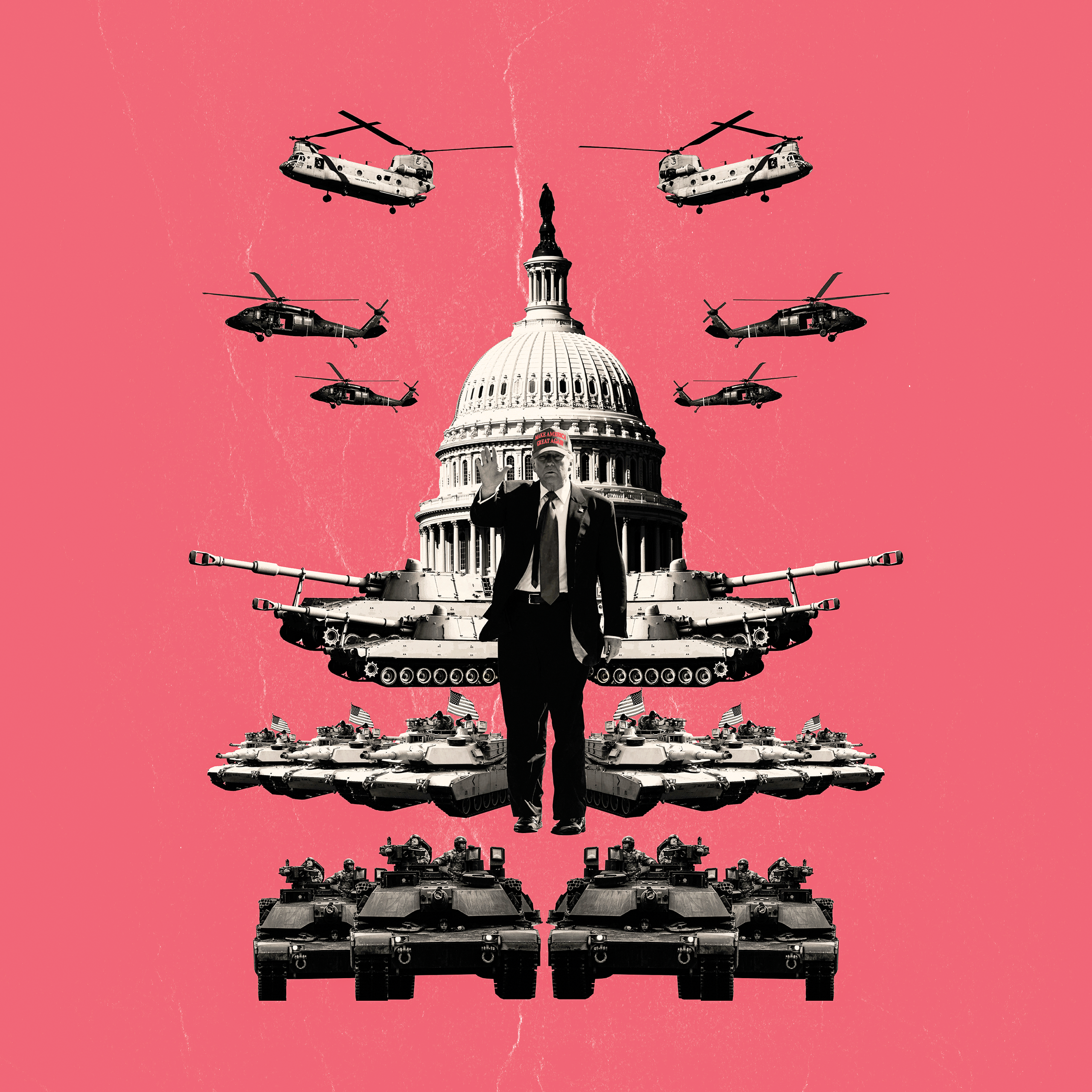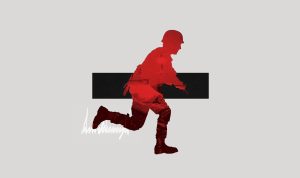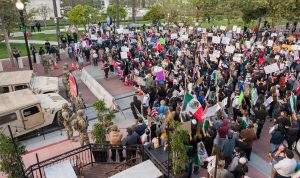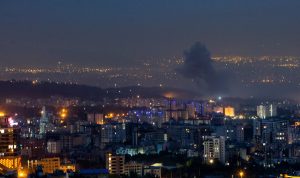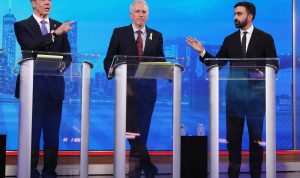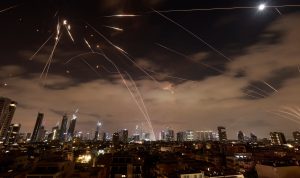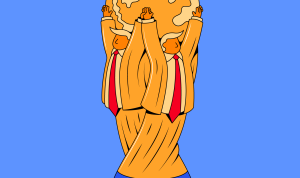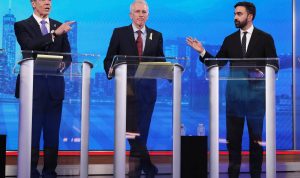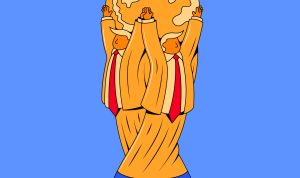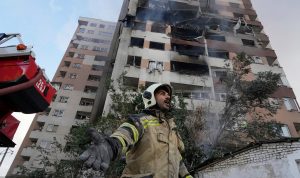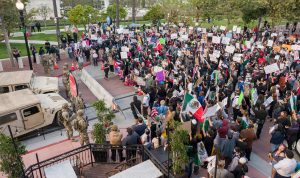Donald Trump is not much for second-guessing his own behavior, so, on the rare occasions that the President expresses regret, it’s worth paying attention. One such moment involves Trump’s decision not to call out federal troops when protests erupted in Minneapolis, Portland, Seattle, and elsewhere in the summer of 2020, after the killing of George Floyd. “I think if I had to do it again, I would have brought in the military immediately,” Trump later told the authors Carol Leonnig and Philip Rucker. On the campaign trail before the 2024 election, Trump similarly lamented being too restrained in dealing with “crime den” cities such as Chicago and New York. “You just have to be asked by the governor or the mayor to come in,” he told an Iowa audience. “The next time, I’m not waiting.”
He didn’t. The recent eruption of protests in Los Angeles over immigration raids offered Trump an opportunity for a do-over. “We’re going to have troops everywhere,” he declared on June 8th. The previous day, the President had bypassed the state’s Democratic governor, Gavin Newsom, to federalize the California National Guard, directing two thousand troops to L.A.; that number was later increased to more than four thousand. It was the first time that a President had mobilized the Guard without a governor’s acquiescence since 1965, when Lyndon Johnson assumed control of the Alabama National Guard from the segregationist governor George Wallace and instructed troops to protect civil-rights leaders as they marched from Selma to Montgomery. Ominously, Trump’s order—issued under the auspices of a 1903 law that permits the President, in situations of “rebellion or danger of a rebellion against the authority of the Government of the United States,” to call out the Guard “in such number as he considers necessary”—was not limited to California or to the existing protests. It authorized deployment to locations where protests “are occurring or are likely to occur.”
On June 9th, Trump followed this up with an order to deploy seven hundred marines to reinforce the California Guard. “We have an obligation to defend federal law-enforcement officers—even if Gavin Newsom will not,” the Defense Secretary, Pete Hegseth, posted on X, saying the political part out loud. California quickly sued to block the federal takeover. “There is no invasion. There is no rebellion,” the state’s attorney general, Rob Bonta, said. Trump, he added, “is trying to manufacture chaos and crisis on the ground for his own political ends.” The President rejected that assertion with the kind of hyperbole that served to prove Bonta’s point. “If we didn’t do the job,” he insisted, “that place would be burning down.”
The lawyers will occupy themselves debating whether Trump’s action is legally permissible. California argued that the takeover violates the law on federalizing the Guard (an amendment to the statute provides that “orders for these purposes shall be issued through the governors of the States”) and represents an unconstitutional intrusion on state sovereignty. The U.S. District Judge Charles Breyer agreed. Trump’s move to invoke the law over Newsom’s objections, Breyer wrote, “threatens serious injury to the constitutional balance of power between the federal and state governments, and it sets a dangerous precedent for future domestic military activity.” An appeals-court panel swiftly put that ruling on hold.
This is about more than technical statute parsing. Trump’s actions raise profound questions about the risks of enmeshing the military in domestic law enforcement, and about whether Trump, always attracted to playing the role of the strongman, is even more inclined in his second term than he was in his first to misuse the military for his own political gratification. Indeed, as the Guard members were arriving in L.A., heavy artillery was being unloaded in the capital for Trump’s long-desired military parade on June 14th—an event to commemorate the Army’s two-hundred-and-fiftieth anniversary, which conveniently coincides with his seventy-ninth birthday.Axioshelpfully tallied a sampling of the hardware: twenty-eight M1A1 Abrams tanks, twenty-eight M2 Bradley fighting vehicles, four Paladin howitzers, eight CH-47 Chinook helicopters, sixteen AH-64 Apache helicopters, and sixteen UH-60 Black Hawk helicopters.
While the tanks roll down Constitution Avenue and the legal battle proceeds, the real-world risk is that Trump will seize on the threat of being thwarted by the judiciary once again to take the far more consequential step of invoking the Insurrection Act. Currently, the Guard and the Marines are limited in what they can do; the Posse Comitatus Act prevents the military from exercising domestic law-enforcement powers. Invoking the Insurrection Act would empower the Administration to use the military more aggressively—to conduct raids, make arrests, and engage in other law-enforcement activities against the civilian population. Trump has been itching to use the Insurrection Act for years. He was talked out of it in the first term by cooler heads, but he, Hegseth, and the Attorney General, Pam Bondi, have been coy in recent days as to whether he will now unleash it. Under the expansively phrased law, the President alone can determine when the conditions of “rebellion” are sufficient to use the military and how long that power should last.
The Insurrection Act was last invoked in 1992, when President George H. W. Bush responded to riots in L.A. after four white police officers were acquitted of beating Rodney King. But in that case the state’s Republican governor and the city’s Democratic mayor had both sought federal intervention. Trump is the man who, according to the former Defense Secretary Mark Esper, said of Black Lives Matter protesters in Lafayette Square in 2020, “Can’t you just shoot them? Just shoot them in the legs or something?” The Insurrection Act in his hands is a terrifying prospect.
The nation’s founders, having chafed under the abuses of George III, understood the twin dangers of an unchecked chief executive and a standing military. The King “has kept among us, in times of peace, Standing Armies without the Consent of our legislatures,” the authors of the Declaration of Independence complained. “He has affected to render the Military independent of and superior to the Civil power.” As delegates to the Constitutional Convention debated how to allocate control over the military, James Madison offered a warning that should resonate today. “The means of defense against foreign danger,” he cautioned, “have been always the instruments of tyranny at home.” It is no exaggeration to suggest that tyranny at home is what Trump is after, or that what is happening on the streets of Los Angeles may be just the start. ♦

